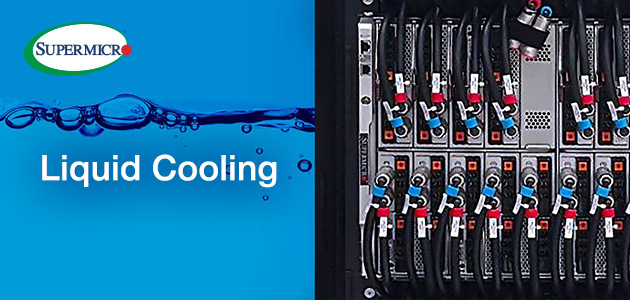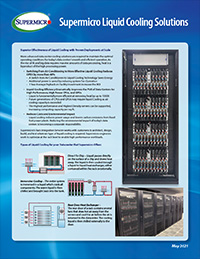OSTA
ASBIS tarnib laias valikus IT tooteid oma klientidele Eestis. Külasta Asbise edasimüüjate loetelu, et leida kõige lähemal asuv IT pood
Uudised

Supermicro Introduces A Range of Liquid Cooling Solutions Delivering Superior Efficiency for the Most Demanding Systems in Today's Top Performing Data Centers
New Top Performance CPUs and GPUs Are Pushing the Limit of Traditional Air-Cooled Servers; Liquid Cooling Technology, improving Datacenter PUE and TCO - saving Over 40% on Power Costs

Download now |
 |
Super Micro Computer, Inc. (Nasdaq: SMCI), a global leader in enterprise computing, storage, networking, and green computing technology, is making available a range of liquid cooling solutions that reduce costs and allow the most demanding applications to run with less jitter and at faster CPU frequencies. Working with customers, Supermicro will design, implement and test the latest liquid cooling technologies at the rack level, ensuring a quick and seamless installation in customers' data centers worldwide. Customers who implement a liquid cooling solution can improve datacenter PUE and TCO by over 40% on power costs.
"Supermicro has established dedicated teams to work with customers and partners to deliver state-of-the-art rack level liquid cooling solutions that enable systems that are used for the most demanding applications to remain operational under heavy computationally loads," said Charles Liang, president, and CEO, Supermicro. "Our most popular servers -- GPU, SuperBlade, BigTwin, and Ultra systems -- are easily outfitted with liquid cooling technology that reduces OPEX while keeping these systems operating at maximum performance levels."

Popular Systems
These selected Supermicro systems, including the latest GPU Systems, SuperBlades, BigTwin, and Ultra systems, are ideal for data centers with demanding applications. Supermicro experts have identified these servers as the best choice for AI, HPC, and related workloads where high-frequency and densely packed CPUs and GPUs are required.
Types of Cooling Offered
Supermicro has designed effective cooling solutions from small to large scale by carefully evaluating each case of our customer’s specific requirements and limitations, including Direct to Chip (D2C) cooling, Immersion cooling, Rear-door Heat Exchanger (RDHx) cooling, or a combination of these technologies.Liquid cooling solutions give IT managers the confidence to run Supermicro servers at sustaining maximum performance levels, increasing the ROI of high-end servers.A range of liquid cooling technologies can be used, depending on the data centers physical infrastructure. D2C cooling can be installed in each server, or entire systems can be immersed in a liquid for maximum heat removal. Supermicro works very closely with customers to determine the best suitable liquid cooling solution. Engineers will design the solution based on the types of systems chosen and the data center infrastructure. All or part of a data center can utilize liquid cooling technologies, optimizing the operating environment.
Source>>
|
To get more information |
|
Disclaimer: The information contained in each press release posted on this site was factually accurate on the date it was issued. While these press releases and other materials remain on the Company's website, the Company assumes no duty to update the information to reflect subsequent developments. Consequently, readers of the press releases and other materials should not rely upon the information as current or accurate after their issuance dates.







